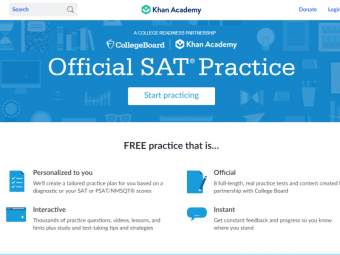Email Etiquette For Business
Tags: Email Etiquette
Immediately Improve Your Writing Skills, Boost Your Productivity and Avoid Common Errors
Last updated 2022-01-10 | 4.5
- save time and reduce communication frustration- explain circumstances when sending an email is necessary and / or appropriate
- identify situations when sending or retrieving emails is not acceptable
What you'll learn
* Requirements
* You will need to print some material which complements the video lectures* so access to a printer is advisable.
* Ideally
* you're working in a field which requires regular email communication with a variety of people. This course requires you to apply the knowledge to your workplace.
* You're either a native English-speaker
* or have advanced knowledge of English (e.g. CEF B2+)
Description
According to Business Insider, "the average U.S. employee spends about a quarter of his or her time at work combing through the hundreds of emails each employee sends and receives each day ".
But despite the sheer volume of emails we send and receive, many business professionals do not use email appropriately. Inappropriate email etiquette can negatively impact on perceptions of professionalism, on efficiency and can increase a company's risk of liability.
This course helps you minimise that risk by coaching you in exceptional email etiquette. Naturally, that includes a focus on professionalism in the workplace, behaviour, email structure, formatting, spelling, the importance of spelling and grammar, the all-important subject line and much more.
Based on my eleven years' experience training professionals in more effective business communication, this course is your go-to guide to write right, every time.
Join me for video and text lectures, hands-on activities, quizzes and more. Download handy resources. Get personalised feedback via the Q&A board, share your experiences and contribute to a growing knowledge base created by professionals just like you from all over the world.
Ready to put your best foot forward? Fantastic. Looking forward to seeing you in the course.
Who this course is for:
- This course is for all business professionals who want to be more confident and effective when they write to their clients and coworkers.
Course content
5 sections • 27 lectures
Introduction Preview 04:35
Hi there and welcome to the course! This first lecture gives you a taste of what to come, but also outlines why we're doing this, what the outcomes for you are going to be, what activities are involved and what level of involvement and interaction I'm hoping for in order for you to get the most benefit from this material.
One thing to note at this point - I use British English spelling. When you're submitting the tasks and you're using American English (spelling and punctuation), of course, that's no problem! We live in a wide world with varying norms, and English spelling is just one part of that.
You'll notice that I often ask for your feedback via the Q&A board - this is a great option to communicate with both me and your fellow learners, and I highly encourage you to take advantage of it. The Q&A board is also where you can submit answers to tasks, and receive feedback on them. If you'd prefer to send me a PM in these instances, that's also no problem, but the Q&A offers added benefits.
Okay! Let's get started with his first lecture. I'm looking forward to working with you!
Jacqueline.
p.s. Please note that all images included in this course come from Stock Unlimited and Pixabay.
Course Administration: Using Udemy, Accessing The Resources Preview 01:06
This brief lecture covers three administrative items which we need to cover before getting stuck into the course.
The Email Etiquette Starter Quiz
Let's start by seeing where you stand in terms of email etiquette.
Introductory Focus Questions Preview 00:20
We start with three focus questions, which I would like you to respond to in the Q&A Section of this course. Why? Because in the Q&A Section we can share our ideas, responses, and experiences with our fellow students.
Professional Behaviour At Work Preview 08:28
How we use our e-mail, company e-mail addresses and our employer’s technology is a serious issue and one which we cover in detail in this lecture: the why and also the potential consequences of misuse (and penalties!).
Sometimes the use is regulated, outlined in work agreements or contracts, sometimes there’s a tacit understanding. But it all comes down to professionalism and appropriate workplace behaviour.
In this lecture, I set the bar pretty high, and you can choose to either work with this bar or adjust it as appropriate to suit your workplace and work culture. But keep in mind that I’m going to be a stickler for rules! I do welcome your feedback and comments in the Q&A section - share with us the norms in your workplace, how you feel you comply and perhaps how your or your colleagues' email professionalism could be improved (if at all).
Emailing On Company Time Preview 01:22
While sending personal emails on work time might be the norm in some workplaces, when it is it's neither professional nor an example of excellence in email etiquette. And there could be serious consequences, often unanticipated.
So to ensure you're putting your best foot forward I've prepared this text lecture which includes some details on workplace monitoring.
The All-Important Subject Field Preview 10:50
Did you know that an email subject line is critical to its chance of being prioritised and opened? Not only that, but considering the sheer volume of emails we receive on a daily basis - emails covering all manner of topics, projects, and problems - our subject line needs to be short, relevant and honest.
In this lecture I invite you to take time out for some critical self-analysis and then to work with me on subject lines. And look out for the two exercise sheets associated with this lecture - I look forward to your feedback on them in our Q&A section!
Subject Line Quiz
Let's see you actively use your critical thinking skills in this short quiz on effective subject lines.
Appropriate Levels of Formality Preview 09:43
The topic of formality is one we necessarily cover in this course on email etiquette, and we're not just thinking of emailing domestically. Adopting the most appropriate level of formality when communicating across cultures is an increasingly important skill to have, and we start be first identifying where and when - in our own work spheres - this is necessary.
Work with me through this lecture as we explore this topic, and please take the time to complete the activity sheet which you'll find, in PDF format, attached to this lecture.
Addressing your Contact Preview 10:49
In this lecture, we’re still on the topic of formality but this time not in an overarching, all-encompassing way but down to specifics.
How do you address your new contacts?
We touch on some cross-cultural aspects here as well as discussing risk.
To CC or Not to CC - That Is The Question Preview 08:16
Little things matter, and having an attention to detail is important in building business relationships. remember - your contact can’t see or hear you, so visual cues lend to the overall impression of your professionalism.
Let me start by asking you a quick question, and I’d like you to take a moment to think about it before continuing - you could even write down your answer in the Q&A. When we share our answers, opinions, and experiences, we can get so much more from this course.
So here’s the question: Who should we CC? By that I mean, when we’re sending an email, who should we put in the CC field, the so-called “carbon copy”?
Consider now why we CC, and in fact, why we used to CC.
That is what we focus on in this lecture: the how, the why, the when and the when not.
Over to You - What Would You Do? Preview 00:26
This course requires your active participation, so this is the lecture for that. Let's hone those CC skills of yours with this situation.
Email Proof-Reading Activity 1
Read the email and answer the given questions.
Formatting Your Email Preview 06:02
You know, of course, the saying that a picture speaks a thousand words? Well, not so in emails. In emails, content is king. Your words and how they are crafted carry the message, not what fonts, colours, formatting or images you choose to illustrate your point. Let's look at that in some detail here, and in the next lecture we follow up with an activity.
Over to You - Activity - Formatting Preview 00:17
This lecture asks you to use your formatting skills to re-write and re-format the email contained in the body of this text lecture. Remember what we've already discussed about:
- Subject Line
- Formality
- Addressing
- CC
Let's get to work!
The Dos and Don'ts Of Attachments Preview 07:29
Did you know there's an art in knowing when to send large attachments? And that this is a crucial element of email etiquette? It could be it's not something you've actively considered before in which case, this lecture is a must.
Removing Clutter Preview 07:27
With the clock ticking, when we're on the search for information in an email it can be frustrating and confusing to scroll endlessly through an email conversation looking for a date, a time, an address or other tidbit of information. The reason is that the email conversation is full of signature files, indents, headers... Where is that date??
Proper email etiquette is about ease of communication so we necessarily focus on the topic of clutter, we analyse our current behaviour, and work to improve on it.
Let's go!
Spelling and Grammar - Yes, We Do Need To Talk About This Preview 01:16
This text lecture highlights the importance of correct spelling and grammar, discusses common mistakes and the profile risks involved, and provides some free resources to help in this area. A must-read for all email communicators!
Matters of Common Courtesy: Greetings and Sign-Offs Preview 06:19
Hello, Hi, Good Day, Thank You, Sincerely, Best Regards. All those intros and sign-offs that are a staple of professional business communications should also be used in your business e-mail communications. Not doing so could have your messages be misinterpreted as demanding or terse.
This lecture covers the issues around salutations and farewells, and how they can be used to benefit business relationship building.
Avoiding Email Mistakes - Signature Files Preview 03:58
Signature Files - What To Leave In, What To Leave Out Preview 02:16
In this text lecture, we follow on from the theory of the previous video lecture and focus on what we should and should not include in our email signature, and this is followed with a task for you to complete.
Quiz: Signature Files
Let's have a quick test of what you've picked up so far, so you can be confident you're excelling in this area!
Avoiding Email Mistakes - Responding Promptly Preview 04:44
Creating Professional Impressions Using Email
Take this quick quiz to find out if you're creating the best professional impression in your email communication.
Your Action Steps Preview 00:38
Before we say goodbye, I have a list of action steps you can commit to, to ensure your continued excellence in email communication.
In Conclusion Preview 03:32
Over To You: Is There A Need For (N)Etiquette Training? Preview 01:38
Continuing with the topic of professional behaviour at work, this lecture contains an article arguing the need for etiquette and netiquette training in the workplace, and asks for your feedback to four questions. This lends focus to the upcoming lectures.








 This course includes:
This course includes:














